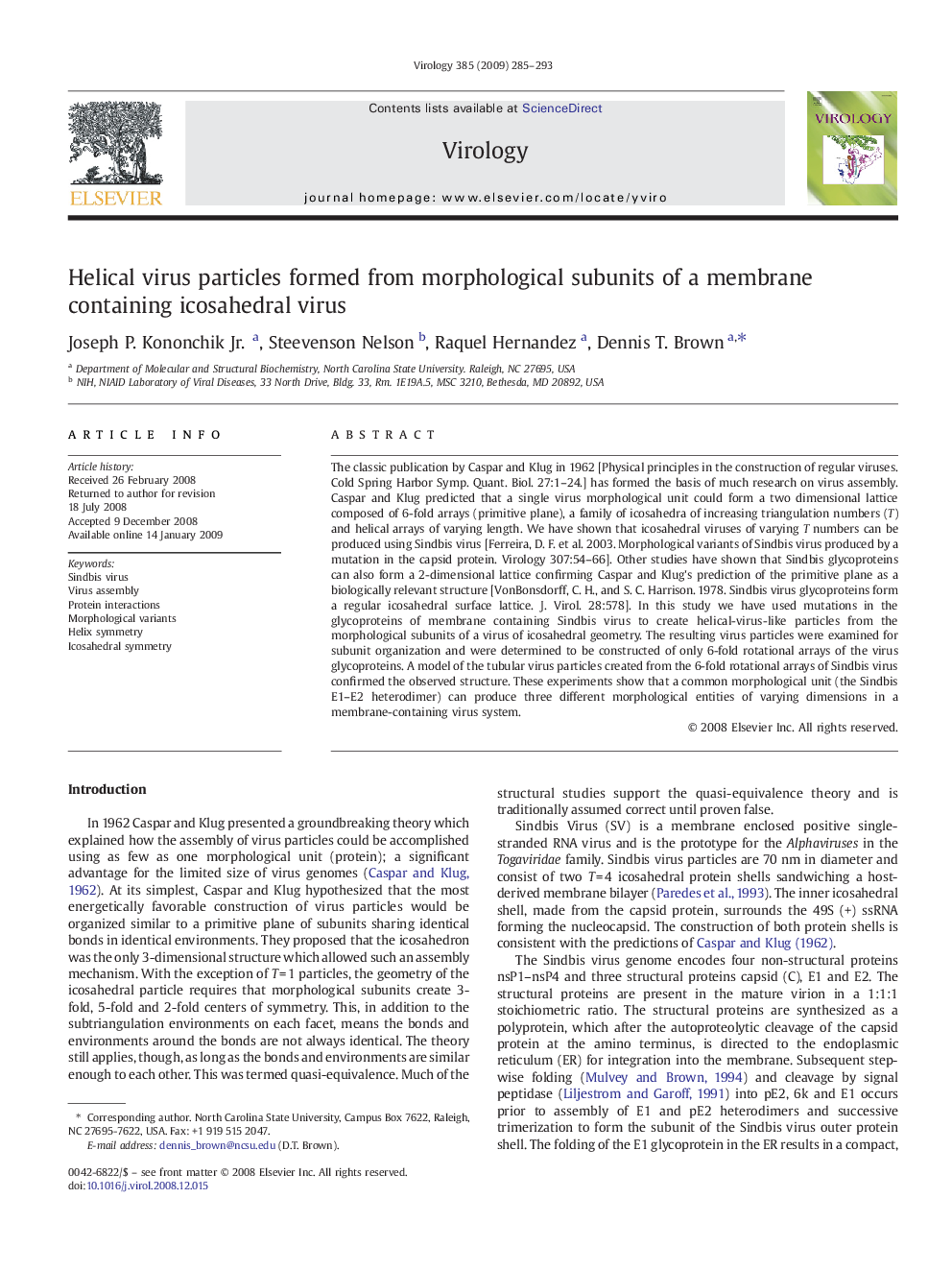| Article ID | Journal | Published Year | Pages | File Type |
|---|---|---|---|---|
| 3426372 | Virology | 2009 | 9 Pages |
The classic publication by Caspar and Klug in 1962 [Physical principles in the construction of regular viruses. Cold Spring Harbor Symp. Quant. Biol. 27:1–24.] has formed the basis of much research on virus assembly. Caspar and Klug predicted that a single virus morphological unit could form a two dimensional lattice composed of 6-fold arrays (primitive plane), a family of icosahedra of increasing triangulation numbers (T) and helical arrays of varying length. We have shown that icosahedral viruses of varying T numbers can be produced using Sindbis virus [Ferreira, D. F. et al. 2003. Morphological variants of Sindbis virus produced by a mutation in the capsid protein. Virology 307:54–66]. Other studies have shown that Sindbis glycoproteins can also form a 2-dimensional lattice confirming Caspar and Klug's prediction of the primitive plane as a biologically relevant structure [VonBonsdorff, C. H., and S. C. Harrison. 1978. Sindbis virus glycoproteins form a regular icosahedral surface lattice. J. Virol. 28:578]. In this study we have used mutations in the glycoproteins of membrane containing Sindbis virus to create helical-virus-like particles from the morphological subunits of a virus of icosahedral geometry. The resulting virus particles were examined for subunit organization and were determined to be constructed of only 6-fold rotational arrays of the virus glycoproteins. A model of the tubular virus particles created from the 6-fold rotational arrays of Sindbis virus confirmed the observed structure. These experiments show that a common morphological unit (the Sindbis E1–E2 heterodimer) can produce three different morphological entities of varying dimensions in a membrane-containing virus system.
